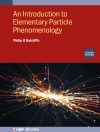Understanding turbulence in magnetically confined fusion plasmas is an important issue on the long road to fusion energy as a power source for humanity. Fusion plasmas are extreme, strongly driven systems, far from thermodynamic equilibrium, in which turbulence plays a major role. This book reviews some of the observations that reveal the complex nature of plasma turbulence in detail and explains their implications. The change in paradigm needed to understand the observations is then discussed and mathematical models are highlighted that might address the dynamics better than traditional models. Along the way, a range of advanced analysis tools needed to characterize turbulence in this complex regime are presented and illustrated, including non-linear analyses, causality, and intermittence. The book aims to stimulate their broader adoption for the analysis of data from both experiments and numerical turbulence simulations.
Key Features:
- Reviews observations that reveal the complex nature of turbulence in fusion plasmas
- Provides advanced data analysis techniques to characterize complex turbulence
- Includes non-linear spectral analyses, causality, intermittence
- Covers self-organization, long-range correlations, long-time memory, models for effective transport
- Includes spontaneous structure formation from turbulence such as zonal flows, MHD modes
สารบัญ
1 Introduction
2 Characterization of turbulence in plasmas
3 Complex features of plasma turbulence
4 Causality
5 Intermittence
6 Closing
Appendix A: Devices
Appendix B: Resistive MHD turbulence model
เกี่ยวกับผู้แต่ง
Boudewijn van Milligen is a senior researcher at the National Fusion Laboratory, Spain. Before that, he conducted research at the RTP tokamak in The Netherlands, which included several stays at the JET Joint Undertaking in the UK and elsewhere. His main areas of interest are turbulence, transport and the interpretation of data from a wide variety of diagnostic systems. He has made a number of original contributions to these areas, using wavelets and techniques from the fields of chaos, statistics and self-similar and critical systems, leading to over 150 refereed publications in the framework of broad international collaborations.
Raúl Sánchez is a full professor of Physics at the Universidad Carlos III de Madrid, Spain. Previously, he spent close to a decade at the Fusion Energy Division of the Oak Ridge National Laboratory (Tennessee, USA), first as a post-doctoral fellow (1998-99) and later as a senior staff scientist (2005-2011). During his research career, he has authored more than a hundred refereed publications in the fields of nuclear fusion, plasma physics, turbulence, computational physics and complex systems. He was the recipient of the Spanish “Miguel Catalán” Science Award in 2009 for scientists younger than forty. He was selected as a Fellow of the American Physical Society in 2017.












